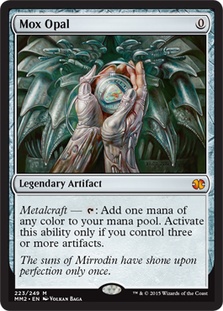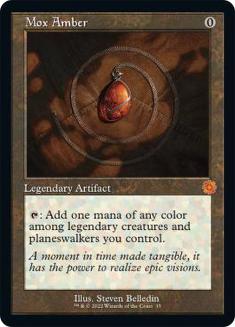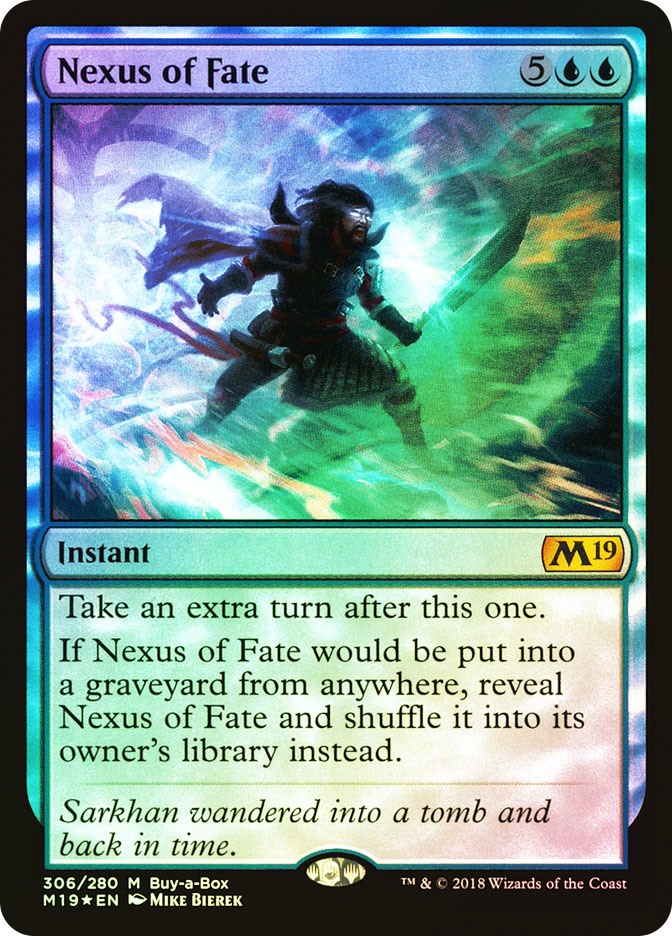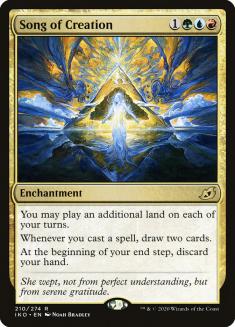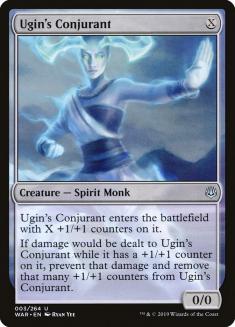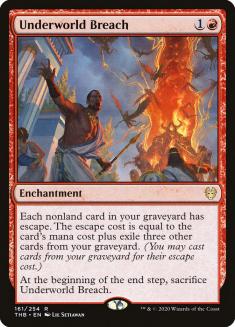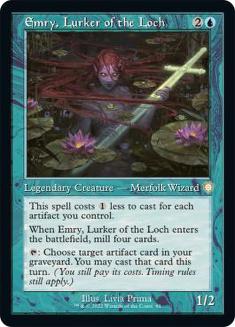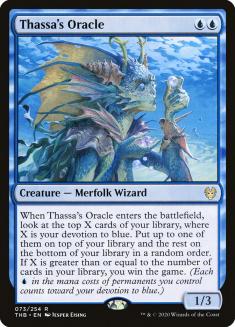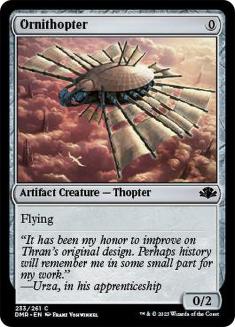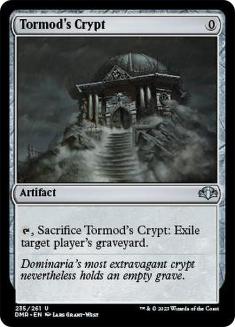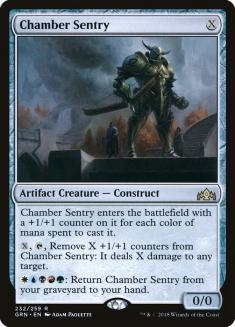There is something about a wacky combo that completely derails my normal deck design process. I have been the control guru for close to twenty years; however, there have been instances where I had to put down Wrath of God. Combo decks stretch the boundaries of competitive Magic, resulting in some of the most unfair outcomes in tournament history. Most bans come from a desperate attempt to stop players from killing each other in the early-game and promote interactive gameplay, regardless of the format in question. On a few occasions, decks that I put a lot of blood and sweat into were removed from existence by the powers that be.
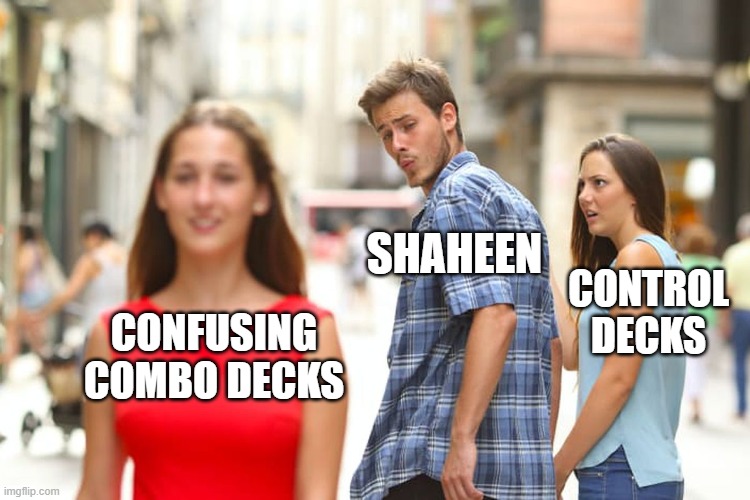
Combo decks, when too powerful, shatter the fragile fabric of gameplay. Difficult to disrupt, consistent, and game-ending play early on are all attributes of a combo deck that should not be around. Usually these decks are centered around artifacts, as they are the last remnants of fast mana in each of the competitive formats. Even Mox Amber in Standard was in a problematic combo deck at the end of its tenure last year; luckily, we only had to endure a few months of it. In Modern, Mox Opal made life miserable for the folks at Wizards of the Coast (WotC) as they attempted to kneecap each deck that abused it. They realized that there was no way to keep the developmental space wide while Mox Opal remained.
Even with Mox Opal gone, Mox Amber is a problem in Modern. As of right now, the professional community is not fully immersed into the format, leaving the metagame a bit stale. I still log on and throw down against the testing gauntlet with Grinding Breach, to make sure it is still the strongest combo option. Even with the hate that is accessible, it still kills on Turn 3 consistently Game 1 and is very resilient to hate in the sideboarded games. Wizards of the Coast will not take out Mox Amber at this point, but eventually they will have no choice but to rid each of the formats of problematic free spells to create the balance they want to achieve. I love combo decks and I will always venture in their direction when available, but it is hard to justify their existence while slaughtering the opposition, through disruption, that early in the game.
This response, from Brian Braun-Duin a couple years ago, best describes my Magic career (minus the Mono-Red Aggro part of course). Even though control is my first and strongest love, there is always a personal dark pleasure in performing a solitaire-style combo deck that *almost* provides an infinite loop.
For this article, you will see that Brian is mostly correct once again. He was a little off on the year, and I have been one of the architects of Grinding Breach behind the scenes, but close enough. The deck this time was created by Greg Orange and it immediately caught my eye on Twitter, where he joked about playing a goofy combo deck that was quite good.
That statement alone forces me to drop everything I am doing and build it for competitive testing. Here is the original deck.
Creatures (23)
- 4 Ornithopter
- 4 Chamber Sentry
- 4 Ugin's Conjurant
- 4 Emry, Lurker of the Loch
- 4 Stonecoil Serpent
- 3 Thassa's Oracle
Lands (21)
Spells (16)

I have not explored much of Historic due to the amount of powerful control cards that are legal. When Teferi, Hero of Dominaria is around, it is tough to look on the edges of the format for something unique. Control has had a rough go in Historic because of facing Nexus of Fate on one end of the spectrum while having to fend off the fastest aggro decks on the other.
Control is at its weakest when the format has the two extremes running the show. When aggro is great, most of the maindeck must be dedicated to survival against creatures, which does not line up well against any Nexus of Fate strategy. Nexus of Fate made Esper Control’s life terrible at the end of Teferi, Hero of Dominaria’s stint in Standard and it does not get any better in Historic. I have crafted a few Esper Control deck variations to handle aggro decks, with great success, but now we must wait for the inevitable ban of Nexus of Fate to take the format back for the heroes. In the meantime, very fast decks, like the one you see here, can dismantle the late-game decks.
Greg’s deck is an easy Turn 4 win if Song of Creation is present and resolves. Since the deck naturally runs Mox Amber, that Turn 4 win has moved to a Turn 3 win more often than expected. Grinding Breach and Ironworks were consistently killing on Turn 3, due to the more powerful Modern options and the natural cantrips that exist in the deck. Unfortunately, Temur Song does not have anything like that available. The zero- to one-mana card draw artifacts simply do not exist in Historic, making this combo deck rely on natural land progression. The best the deck must offer is Witching Well and that is far from Arcum’s Astrolabe and Mishra’s Bauble. Without the combo pieces naturally providing land drop assistance, Temur Song must aggressively mulligan and get a little lucky to break through like the other combo decks did before.
The most powerful aspect of this deck, compared to similar options in the past, is that it is a one-card combo. You simply need to resolve Song of Creation and the game is effectively over. With most other competitive combo decks, two cards are required to combo off. Song of Creation, while on the battlefield, turns every remaining spell in the deck into fuel for the combo win.
This is the reason why mulliganing takes place more often and is much more important here. Without Song of Creation in the opening hand, the amount of dig to get to it is limited. I tried to cut combo pieces for more blue card draw, but it resulted in a much higher percentage of fizzling out. A few Ugin’s Conjurants can come out, but the rest of the zero-cost spells are largely set in stone. This makes it difficult to develop an effective sideboard and add more consistency to the maindeck. Fortunately, I found a few spots to make modifications, and I am very happy with the results.
Creatures (20)
- 4 Ornithopter
- 4 Chamber Sentry
- 2 Ugin's Conjurant
- 4 Emry, Lurker of the Loch
- 4 Stonecoil Serpent
- 2 Thassa's Oracle
Lands (21)
Spells (19)

This version of the combo is very close to Greg’s masterpiece. I modified the manabase and included Underworld Breach. Underworld Breach is a card that yearns to be with Mox Amber, producing extra mana the turn where the combo is taking off. On Turn 3 or Turn 4, Song of Creation resolves, the additional land drop arrives, and the Mox Ambers do the rest. If times get rough during the combo and the amount of gas in the engine is close to empty, two mana buys an Underworld Breach. This guarantees the combo’s success more than risking the remaining mana on some of the one-mana spells in the deck.
Temur Song before Underworld Breach had a higher fail rate than I was comfortable with. Like I joked at the start of the article, I’m all about combo decks that take a little elbow grease to get the job done. This deck exemplifies that and requires careful execution with the limited resources available during the combo. One mistake can lead to the combo falling short, you discarding your hand, and the game being effectively over. Underworld Breach provides a giant insurance policy that breathes life into the combo where luck was required before.
Underworld Breach grants an additional avenue of victory outside of fueling the combo. There are games where Song of Creation is tough to find, a great deal of mediocre blocking is taking place, and the game looks grim for the combo team. In these games, we are milling Song of Creation with Emry, Lurker of the Loch or it was countered/destroyed.
Underworld Breach allows us to resuscitate it with six mana and win the game on the spot. This is like the role it plays in the Pioneer and Modern combo decks, giving us a shield against disruption that can also be used to recast zero-cost artifacts if needed. The power level of Underworld Breach is unmatched in Historic and it is only a matter of time until it has enough cheap spells around it to become the villain we all hate. In the meantime, we need to enlist its services to harden the combo game of this deck against all foes.
The cuts made to fit Underworld Breach were two Ugin’s Conjurants and one Thassa’s Oracle. The role of Thassa’s Oracle in this deck is very important, as the amount of dig available to us is embarrassingly low. I often must use the first copy to find an Underworld Breach or Song of Creation, leaving one copy to win the game at the end. There are some games where I mill both copies, which assigns the resurrection job to Underworld Breach. But as important as Thassa’s Oracle is, the third copy was unnecessary here and became the first cut.
The two Ugin’s Conjurants were a bit more difficult and required some reps to determine if I could trim them safely. After rigorous testing, 22 zero-cost spells is the bare minimum to include. This allows the deck to continue to combo off and yields space for the changes you see.
There are consequences to having to keep a critical mass of worthless spells in a deck for it to function. The most obvious one is the lack of innovation, outside of better combo pieces being printed. Ugin’s Conjurant is the worst of the bunch because it is not an artifact, making it incompatible with Emry. That negative interaction came up far more often than I expected, making Ugin’s Conjurant the one to go when installing upgrades to the deck. The only other swap I made was dropping a Rootbound Crag for an Island to assist with the heavy blue requirement in the early-game. The deck yearns for an untapped blue source on Turn 1 for Emry and Witching Well, so this was an easy fix to the manabase.
Temur Song has performed very well in the last few days of testing. I was shocked at the win consistency, even if it required constant mulligans to five. The zero-mana combo pieces are free pitches to the bottom of the library when mulliganing because they are not always required to win the game when it’s go-time. It took me a few games to realize that every hand without an abundance of digging, or a physical copy of Song of Creation, must be sent back. It is what you sign up for when you play a deck like this and the results have been promising since I accepted those terms.
For those interested in moving this deck from a Best-of-One to Best-of-Three, it will be difficult. As discussed, the deck requires a giant pile of do-nothing spells, making sideboarded games very difficult to win. Underworld Breach, Thassa’s Oracle, and Ugin’s Conjurant can all be shaved to provide three or four sideboard cards to come in, but the consistency will suffer. This is the reality for all combo decks, but Temur Song gets hit much harder than most. The next step in this deck’s development is to craft a sideboard that only brings in three to four cards per matchup, unique big hitters, to sure up some weak areas.
The matchups against aggro and Simic Nexus have been positive. The speed of the deck, coupled with the lack of disruption by these top decks, pushes Temur Song to the top. The harder matchups will be those that play a very reactive game with counterspells, and those decks are rare in Historic. The hand disruption has been easy to defeat so far with the help of Underworld Breach and needing only one card to combo. Once this deck ventures out of the Best-of-One world, matchup dynamics will change.
At this point in the metagame, I highly recommend taking Temur Song into the Best-of-One ranked battlefield. Like its cousins in other formats, it rules the Game 1 universe better than the competition.


